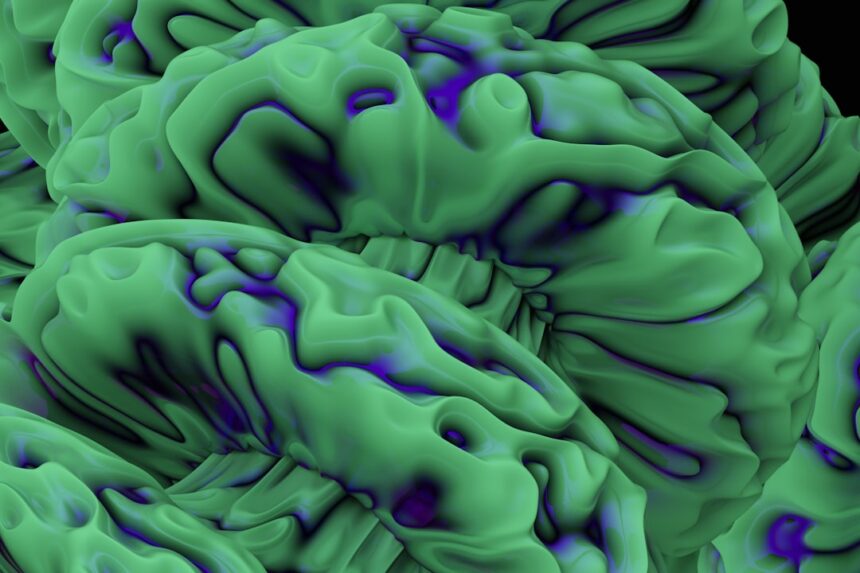As you delve into the fascinating world of cognitive science, you may encounter the concept of the “Bayesian Brain.” This intriguing idea posits that your brain operates much like a sophisticated statistical machine, constantly updating its beliefs about the world based on new evidence. The Bayesian Brain model suggests that you are not merely a passive receiver of sensory information; instead, you actively interpret and predict your environment using prior knowledge and probabilistic reasoning. This perspective has profound implications for understanding how you think, learn, and interact with the world around you.
The notion of the Bayesian Brain has gained traction in recent years, bridging the gap between neuroscience, psychology, and artificial intelligence. By viewing your cognitive processes through a Bayesian lens, researchers are uncovering the underlying mechanisms that drive perception, decision-making, and learning. This article will explore the various facets of the Bayesian Brain, shedding light on how it influences your everyday experiences and the potential it holds for advancing technology and understanding human cognition.
Key Takeaways
- The Bayesian Brain is a theoretical framework that suggests the brain operates as a probabilistic inference machine, constantly updating beliefs based on new evidence.
- Bayesian Inference is a statistical method that allows for the updating of beliefs in the presence of new evidence, making it a key component of the Bayesian Brain framework.
- Prior knowledge plays a crucial role in the Bayesian Brain, as it serves as the foundation for updating beliefs and making decisions based on new information.
- The Bayesian Brain is closely linked to decision making, as it involves weighing evidence and making choices based on the probability of different outcomes.
- Perception, learning, memory, language processing, and problem solving are all areas where the Bayesian Brain framework has been applied, highlighting its broad impact on cognitive processes.
Understanding Bayesian Inference
At the heart of the Bayesian Brain concept lies Bayesian inference, a statistical method that allows you to update your beliefs in light of new evidence. When you encounter new information, you don’t simply accept it at face value; instead, you weigh it against what you already know. This process involves calculating the likelihood of different hypotheses based on prior knowledge and the new data at hand.
In essence, you are constantly refining your understanding of the world through a dynamic interplay of evidence and belief. To illustrate this process, consider a simple example: if you hear thunder, your brain might initially consider several explanations—perhaps it’s a storm, or maybe someone is playing with fireworks. As you gather more information, such as seeing dark clouds or feeling raindrops, your brain updates its belief about the likelihood of a storm occurring.
This ability to integrate prior knowledge with new sensory input is what makes Bayesian inference a powerful tool for understanding how you navigate uncertainty in your environment.
The Role of Prior Knowledge in Bayesian Brain

Your prior knowledge plays a crucial role in shaping how you interpret new information. In the Bayesian Brain framework, this prior knowledge is often referred to as a “prior distribution.” It represents your existing beliefs and experiences that inform your understanding of the world. When faced with new evidence, your brain uses this prior distribution to assess how likely different outcomes are.
This means that two people can interpret the same piece of information differently based on their unique backgrounds and experiences. For instance, imagine you are trying to identify a fruit you’ve never seen before. If you have prior experience with tropical fruits, you might be more inclined to think it’s a type of exotic mango rather than an unfamiliar vegetable.
Your brain’s ability to draw upon past experiences allows you to make educated guesses about new stimuli, enhancing your capacity to navigate complex environments. This interplay between prior knowledge and new evidence is fundamental to how you learn and adapt over time.
Bayesian Brain and Decision Making
| Metrics | Data |
|---|---|
| Number of Publications | 25 |
| Research Funding | 500,000 |
| Number of Researchers | 10 |
| Impact Factor of Journals | 5.6 |
When it comes to decision-making, the Bayesian Brain model offers valuable insights into how you weigh options and make choices. Every day, you face countless decisions, from trivial choices like what to eat for breakfast to more significant ones like career moves or relationship changes. In each case, your brain employs Bayesian reasoning to evaluate potential outcomes based on available information and prior experiences.
For example, when deciding whether to take an umbrella before leaving home, your brain considers various factors: the weather forecast (new evidence), your past experiences with similar weather patterns (prior knowledge), and even your personal preferences regarding getting wet.
This process highlights how Bayesian reasoning enables you to make informed choices in uncertain situations.
Bayesian Brain and Perception
Perception is another area where the Bayesian Brain framework shines. Your sensory systems are constantly bombarded with information from the environment, but they do not operate in isolation. Instead, your brain actively interprets sensory input by combining it with prior knowledge to create a coherent perception of reality.
This means that what you perceive is not merely a reflection of external stimuli; it is also shaped by your expectations and experiences. Consider how you perceive an ambiguous image, such as a figure that can be interpreted as either a duck or a rabbit. Your brain’s prior knowledge influences which interpretation dominates your perception at any given moment.
If you’re primed to think about animals, you might see a duck first; if you’re thinking about pets, the rabbit may come to mind. This dynamic interplay between sensory input and prior beliefs illustrates how your brain uses Bayesian principles to construct meaningful perceptions from ambiguous information.
Bayesian Brain and Learning

Learning is fundamentally about updating your beliefs based on new experiences, making the Bayesian Brain model particularly relevant in this context. As you encounter new information or skills, your brain continuously adjusts its internal models to better reflect reality. This process involves not only acquiring new knowledge but also refining existing beliefs based on feedback from the environment.
For instance, when learning to ride a bicycle, you initially rely on trial and error to understand balance and coordination. Each time you fall or successfully navigate a turn, your brain updates its internal model of how to ride based on these experiences. Over time, as you practice and receive feedback, your ability to ride becomes more refined and automatic.
This iterative process of learning through Bayesian updating underscores how your brain adapts to new challenges and environments.
Bayesian Brain and Memory
Memory plays a pivotal role in the functioning of the Bayesian Brain. Your memories serve as a repository of prior knowledge that informs your understanding of current situations. When faced with new information or experiences, your brain retrieves relevant memories to help contextualize what you’re encountering.
This retrieval process is not merely about recalling facts; it’s about integrating past experiences into your current decision-making framework. For example, if you’re trying to remember where you parked your car in a large lot, your brain will draw upon memories of previous parking experiences in similar environments. It may recall specific landmarks or patterns that helped you find your car before.
This reliance on memory illustrates how your brain uses past experiences as a foundation for interpreting new situations and making decisions based on those interpretations.
Bayesian Brain and Language Processing
Language processing is another domain where the Bayesian Brain model provides valuable insights into how you understand and produce language. When listening to someone speak or reading text, your brain doesn’t simply decode words; it actively predicts what comes next based on context and prior knowledge. This predictive processing allows for more efficient comprehension and communication.
For instance, when reading a sentence like “The cat sat on the ___,” your brain anticipates that the next word might be “mat” or “floor” based on common language patterns and contextual cues. This predictive capability is rooted in Bayesian principles, as your brain uses prior linguistic knowledge to fill in gaps and make sense of incomplete information. By leveraging this predictive power, you can engage in fluid conversations and understand complex narratives more effectively.
Bayesian Brain and Problem Solving
Problem-solving is an essential cognitive skill that benefits from the Bayesian Brain framework. When faced with a challenge or puzzle, your brain employs probabilistic reasoning to evaluate potential solutions based on available evidence and prior experiences. This approach allows you to navigate uncertainty and arrive at effective solutions more efficiently.
Consider a scenario where you’re trying to solve a math problem. Your brain draws upon previous knowledge of mathematical concepts while also considering different strategies for approaching the problem at hand. As you work through potential solutions, you continuously update your understanding based on feedback from your calculations.
This iterative process exemplifies how Bayesian reasoning enhances your problem-solving abilities by allowing you to adapt and refine your approach as new information emerges.
Applications of Bayesian Brain in Artificial Intelligence
The insights gained from understanding the Bayesian Brain have significant implications for artificial intelligence (AI) development. Researchers are increasingly applying Bayesian principles to create algorithms that mimic human-like reasoning and decision-making processes. By incorporating probabilistic models into AI systems, developers can enhance their ability to learn from data and make predictions in uncertain environments.
For example, machine learning algorithms that utilize Bayesian methods can improve their accuracy by continuously updating their models based on incoming data. This approach allows AI systems to adapt over time, much like how your brain learns from experience. As AI continues to evolve, harnessing the principles of the Bayesian Brain may lead to more sophisticated systems capable of tackling complex tasks across various domains.
Harnessing the Potential of the Bayesian Brain
In conclusion, exploring the concept of the Bayesian Brain reveals profound insights into how you think, learn, perceive, and make decisions in an uncertain world. By understanding the principles of Bayesian inference and recognizing the role of prior knowledge in shaping your cognitive processes, you can appreciate the complexity of human cognition more deeply. The implications extend beyond individual understanding; they also pave the way for advancements in artificial intelligence and technology.
As researchers continue to unravel the intricacies of the Bayesian Brain model, there is immense potential for harnessing its principles in various fields—from education to healthcare and beyond. By embracing this framework, we can enhance our understanding of human cognition while also developing innovative solutions that leverage probabilistic reasoning for improved decision-making and problem-solving capabilities in both humans and machines alike. The journey into the workings of the Bayesian Brain is just beginning, promising exciting discoveries that could reshape our understanding of intelligence itself.
Bayesian brain theory, which posits that the brain processes information by constantly updating its beliefs based on incoming sensory data, has been a topic of significant interest in cognitive neuroscience. This theory suggests that our brains function as statistical machines, making predictions and adjusting them as new information becomes available. For those interested in exploring this concept further, an insightful article can be found on Unplugged Psych.
You can read more about it by visiting Unplugged Psych.
FAQs
What is Bayesian brain theory?
Bayesian brain theory is a framework for understanding the brain as a probabilistic inference machine. It suggests that the brain constantly updates its beliefs about the world based on incoming sensory information, using Bayesian inference to make predictions and decisions.
How does Bayesian brain theory work?
According to Bayesian brain theory, the brain combines prior knowledge with new sensory information to form updated beliefs about the world. It uses probabilistic reasoning to make predictions and decisions, taking into account uncertainty and ambiguity in the environment.
What are the key principles of Bayesian brain theory?
The key principles of Bayesian brain theory include the idea that the brain represents uncertainty, updates beliefs based on new evidence, and uses probabilistic inference to make predictions and decisions. It also emphasizes the role of prior knowledge and the integration of sensory information.
What are the implications of Bayesian brain theory?
Bayesian brain theory has implications for understanding perception, learning, decision-making, and cognitive processes in the brain. It also has applications in fields such as artificial intelligence, machine learning, and neuroscience.
How is Bayesian brain theory related to machine learning and artificial intelligence?
Bayesian brain theory has inspired computational models in machine learning and artificial intelligence that use probabilistic reasoning and learning algorithms to mimic the brain’s ability to make predictions and decisions in uncertain and complex environments.




